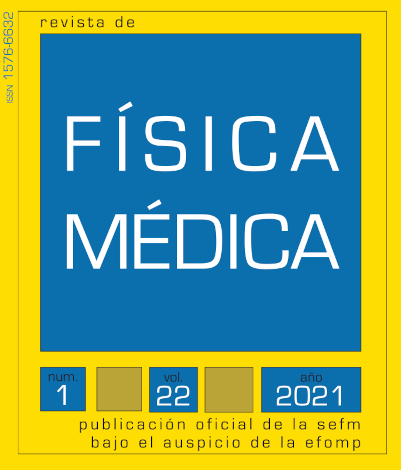Protocol for the quality control of Digital Breast Tomosynthesis Systems
DOI:
https://doi.org/10.37004/sefm/2021.22.1.003Keywords:
Digital breast tomosynthesis, quality control, dosimetry, image qualityAbstract
Breast tomosynthesis has experienced exponential growth in the last 10 years, due to the advantages of this imaging modality for the detection and diagnosis of breast pathologies. In addition, DBT systems are similar to conventional mammography systems, making it easy for radiographers (TSID) to learn how to use them. DBT systems are also versatile, allowing the acquisition of both 2D digital mammograms and tomographies.
The scientific societies of Medical Physics, Radiological Protection and Breast Imaging have agreed on the need to develop a specific quality control protocol for DBT systems. In the drafting of the document, educational and practical aspects have been taken into account to facilitate the understanding and performance of the proposed tests. In accordance with this philosophy, firstly, the evidences that demonstrate the capacity of DBT in the diagnosis of breast lesions are presented. Secondly, the physical fundamentals of this technique are described, as well as the different DBT systems on the market. Quality control tests are included to evaluate the physical parameters that characterize the performance of the DBT systems, as well as tests to evaluate the physical and clinical image quality. This last aspect is a novelty with respect to other protocols and aims both to achieve greater involvement of all professionals (physicists, radiologists and radiographers) and to achieve a more coordinated approach to quality control tasks. On the other hand, the clinical quality criteria justify the tests proposed for the quality control of the physical aspects.
The methodology to be followed to perform the measurements and to analyse the data is detailed in each of the quality control tests. Some examples to illustrate the measurement analysis procedures are included in appendices at the end of the document. This approach is different from that adopted in previous protocols published in our country and is intended to facilitate the performance of the tests in addition to advancing the understanding of the imaging modality.
At the time of writing this document, only the protocol published by the European Reference Organization for Quality Assured Breast Screening and Diagnosis (EUREF) exists. We want professionals to pay attention to this fact so that they take an active role in assessing the validity of the proposed tests based on the results they obtain.








